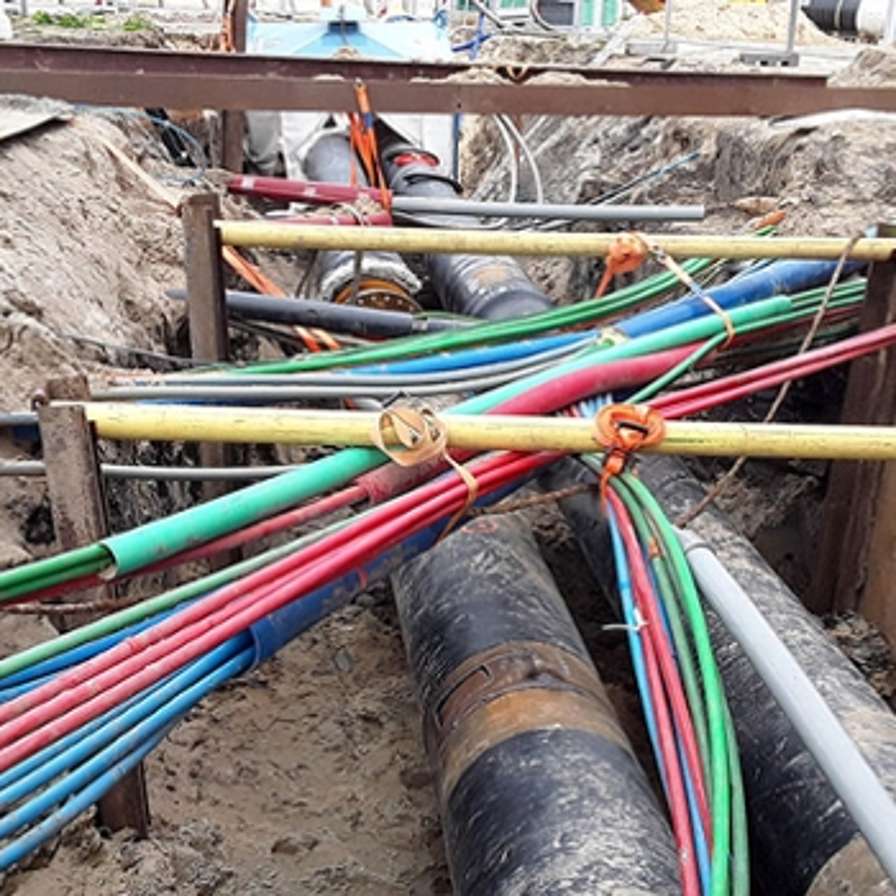Quantum Sensing for Underground Infrastructure

A significant portion of the Dutch infrastructure, including gas, water, and electricity pipelines, is located underground. After decades of work by various parties, visibility into this infrastructure has diminished, leading to major challenges during excavation projects. Unforeseen damage to pipelines and cables not only results in high costs but also delays projects and puts additional strain on scarce technical personnel.
This project focuses on using quantum sensing technology to efficiently and accurately map the underground infrastructure in the Netherlands, such as gas and water pipelines. The Applied Quantum Computing research group at the Amsterdam University of Applied Sciences (HvA) plays a key role in developing this technology, which offers significant benefits for companies such as Alliander.
Fast and Accurate Mapping of Underground Pipelines
Quantum sensing leverages quantum mechanics principles to perform highly sensitive measurements. This project aims to map underground pipelines faster and with greater accuracy, a crucial aspect in the context of the energy transition. The research is led by Marten Teitsma, professor of Applied Quantum Computing, whose research group has received a KIEM High Tech grant to further develop and apply this technology.
"Due to its unprecedented precision, quantum sensing offers numerous possibilities. Some applications are obvious, like in this project, while others will only become apparent in the future. Already, it promises to help us work faster, safer, and more accurately on underground infrastructure, directly impacting the efficiency of projects within the energy transition." – Marten Teitsma, Professor of Applied Quantum Computing
Preventing Pipeline Damage
Quantum sensing contributes to safer and more efficient underground operations, particularly in the energy sector. Preventing unexpected damage to pipelines reduces costs and eases the workload of technical personnel. This is crucial at a time when the demand for infrastructure maintenance is increasing due to the energy transition.
The project aims to develop a practical solution that can be used by companies such as Alliander to map underground infrastructure more quickly and accurately. The results will be published in the form of research reports, potentially supported by visual tools such as infographics.
Opportunities for Students and Researchers
This project offers students at the Amsterdam University of Applied Sciences the opportunity to engage in cutting-edge research in the field of quantum technology. Through hands-on research, students gain practical experience in developing and applying new technologies in the energy sector.
For researchers, the project provides a platform to test and validate new quantum techniques in real-world scenarios. For education, it offers students the chance to work with advanced technologies in a socially relevant context.
Partners
The project is carried out in collaboration with various partners, including:
- Alliander
- High Tech Alliance
- Port of Amsterdam
Users of this research will benefit from more precise and safer methods for mapping underground infrastructure, leading to cost savings and more efficient processes.
Funding
The project is funded by the KIEM High Tech grant.
This initiative aligns seamlessly with the research agenda of the Applied Quantum Computing research group, which focuses on applying quantum technology in practical applications with societal impact, such as infrastructure management and the energy transition.